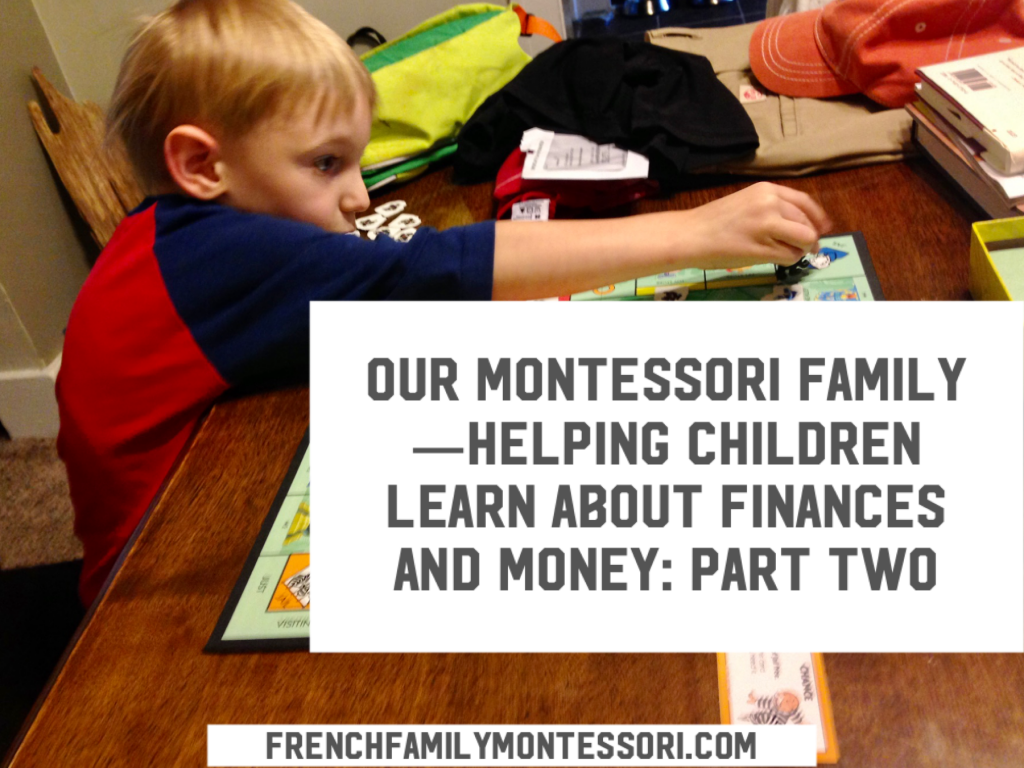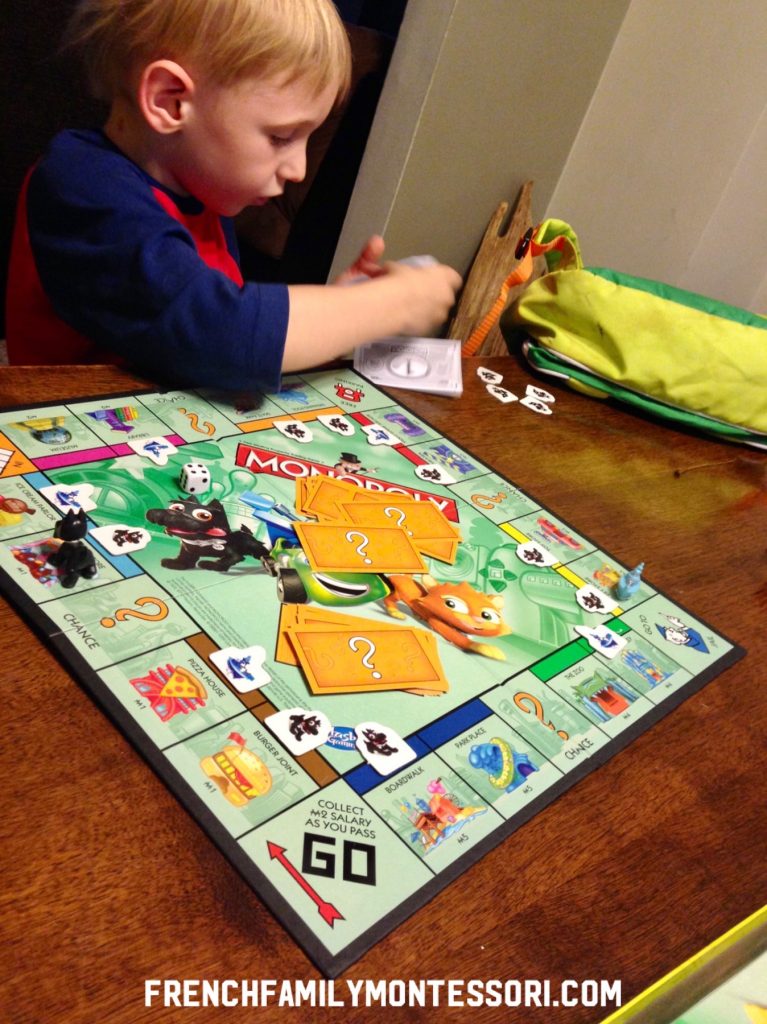
Part one was all about building a foundation and values when it comes to money. Now, let’s talk about cash and how four quarters is the same amount as a dollar. You’ll notice that I don’t have age recommendation on the activities or games I’ll recommend. That’s because this will vary greatly, depending on your child’s interests and abilities. So, as with any activity, follow your child’s lead.
Activities involving real money. You may not need to provide actual money, lately coins have been scarce, but you’ll want to avoid the obviously fake looking play money, like Monopoly money, in these activities (we use this set, but I like the paper bills in this set, this set’s coins, and the checks that come with this set, too). (If you’re able, it may be a good idea to replace the money in games, like Monopoly, with more realistic looking money.) Some of these activities may be introduced as early as a young toddler and made challenging enough for older second plane children.
- Coin sorting
- Matching name of coin to the coin (three part cards)
- Matching the coin amount to the coin.
- How many____ equals___? (Ex: How many quarters equals a dollar?)
- Cost. Have images of items, like a doll, with a cost. Then use the money provided to create the amount for that item. (Ex: Have a picture of a book for $2.15. The child could create that amount in a variety of ways–2 dollars, a dime and nickel or 1 dollar, 4 quarter, a nickel and ten pennies, etc.)
- Create a budget. Or to make it more fun and create a budget for a doll house (more about this in following post).
Have you thought about having a Mummy’s Store? With Covid changing how many of us now visit the stores, often leaving our children home, there aren’t as many opportunities for them to spend their saving (like I explained in part one). So having a few options at home for them to purchase gives them the opportunity to see something they would like to save for and then purchase. To begin, I recommend this over online stores, like Amazon, so that the reward is immediate. When you buy something online, yet still hold the cash in hand, it can be a little confusing. Even if you were to take the money immediately, the wait can can make this not as effective. As time goes on, waiting for the reward and ordering online helps encourage patience (although, I don’t know about you, but the 2-day Prime shipping has me a little impatient with other sites, haha).
The history of money. Humankind hasn’t always used paper notes and coins to pay for materials we needed. Prior to money, we bartered. Why didn’t I include this in part one? As to prevent confusion. We first want to understand what money is currently and how we use it today. Besides, there is so much that can be done with the history of money, like create you own in-home bartering system–what a way to explore talents and skills. (When I was younger, my mum would exchange baby-sitting services for piano lessons.)
With time, we went from bartering to using livestock or materials, like silver, to purchase items.
Did you know that coins have ridges to prevent them from being shaved, so that they maintain their value?

Play games with money. Not only do games provide fun, family-bonding experiences, but they also present learning opportunities and exposure in different ways.
- Monopoly is a favourite in this house (I collect different them), we obviously started with Monopoly Jr.
- Payday has always been one of T’s favourites to play.
- Act Your Wage, another favourite of mine.
- Buy It Right Shopping Game a fun shopping game that include a list and adding up totals.
- Money Bags prefect for going over coin values.
- Allowance Game. Another favourite of T’s.
- Managing My Allowance Money Game. Another allowance game, but with greater amounts.
- Money and Budget Game. Money and budgets (this makes my little financial coach heart so happy).
Does your family have any favourite games or ways to learn about money?
Disclosure: French Family Montessori uses affiliated links through Amazon. There is no additional cost to you, but provides a small compensation that helps support this site. I only share products that we use, have used, or are on our wish list. There is no obligation to purchase an item through an affiliated link.
.
.
.

2 thoughts on “OUR MONTESSORI FAMILY–HELPING CHILDREN LEARN ABOUT FINANCES AND MONEY: PART TWO”